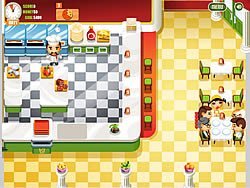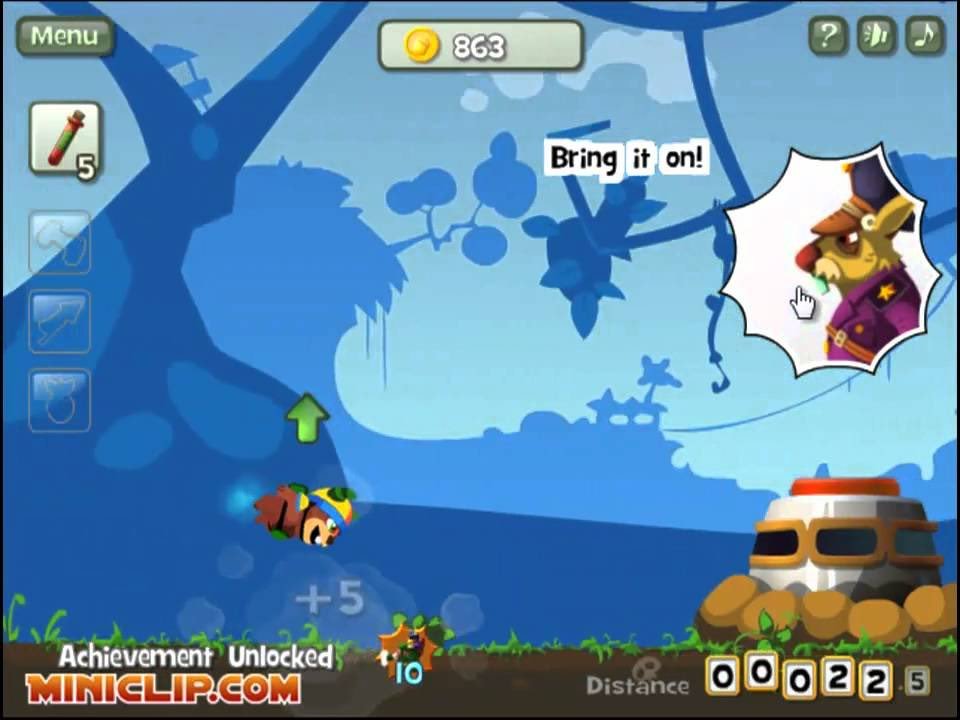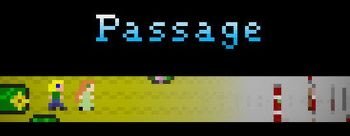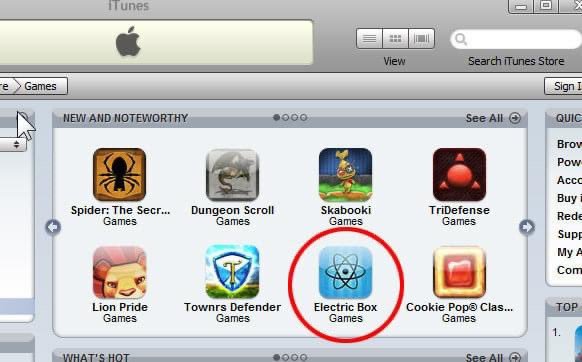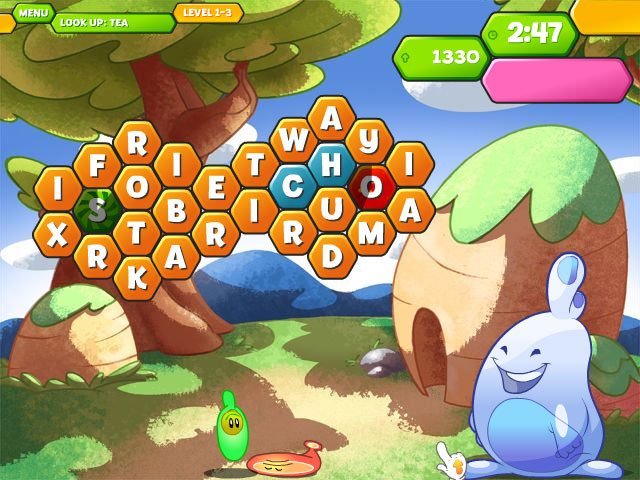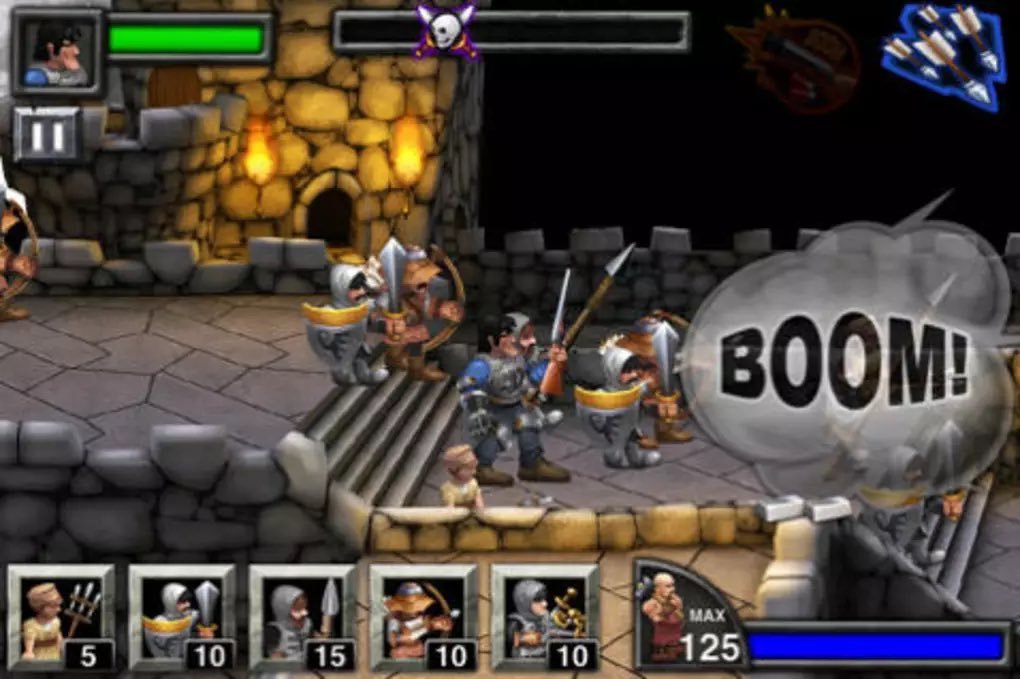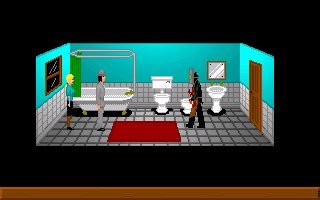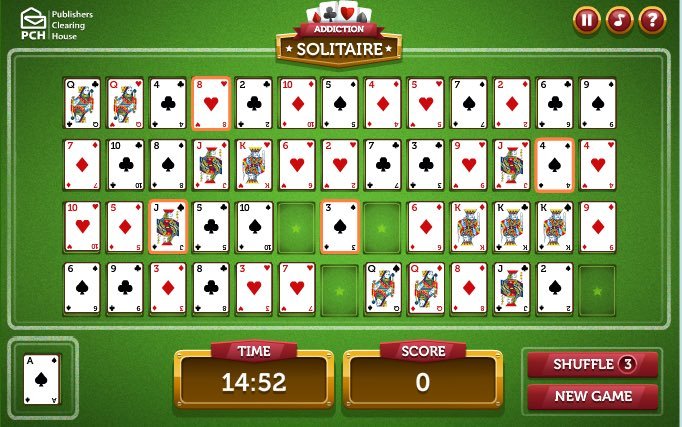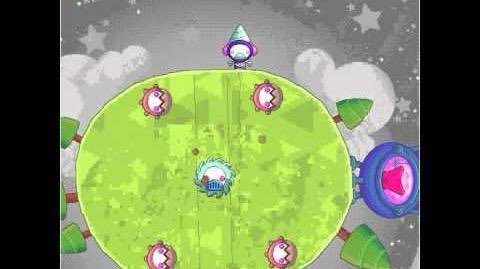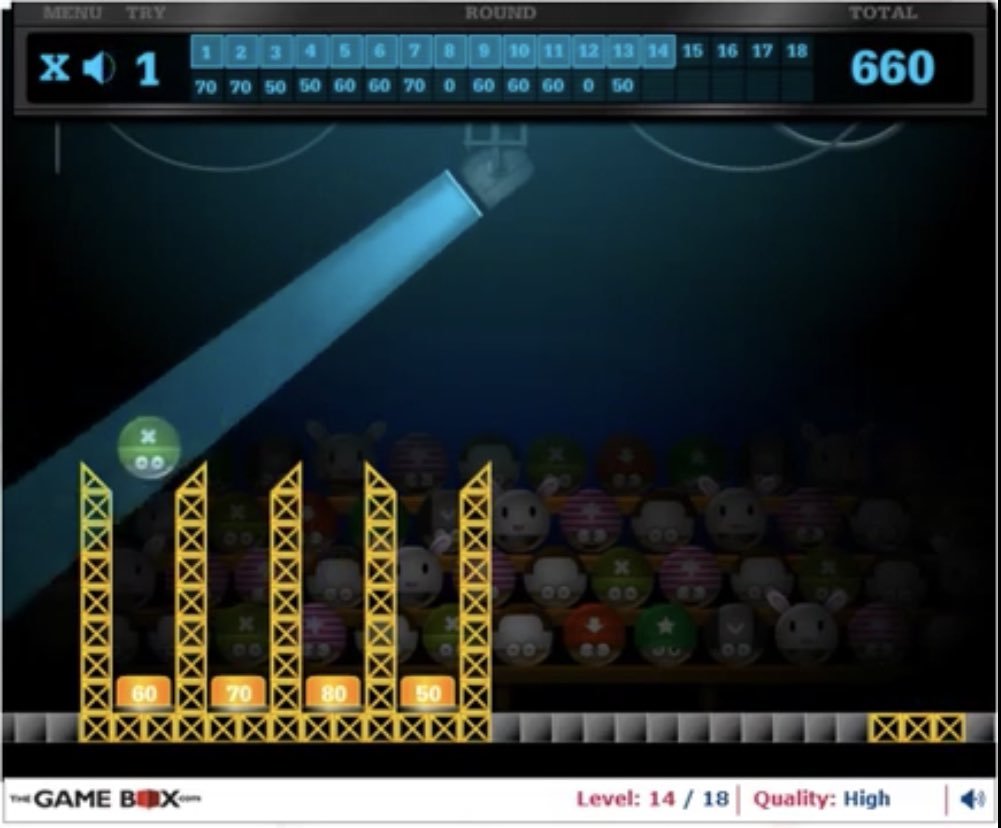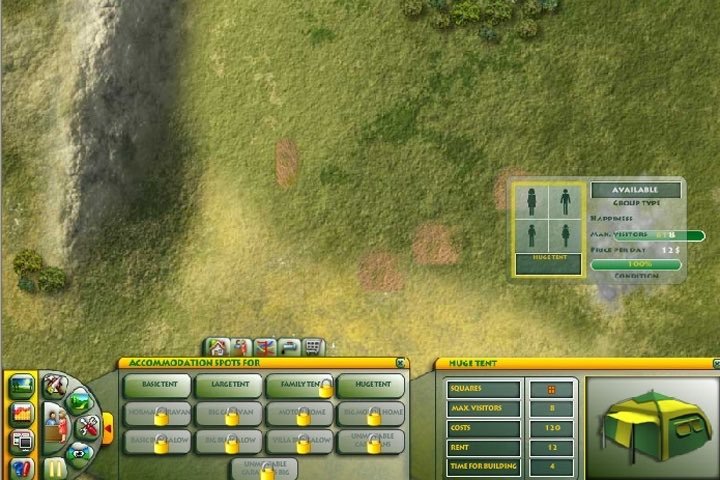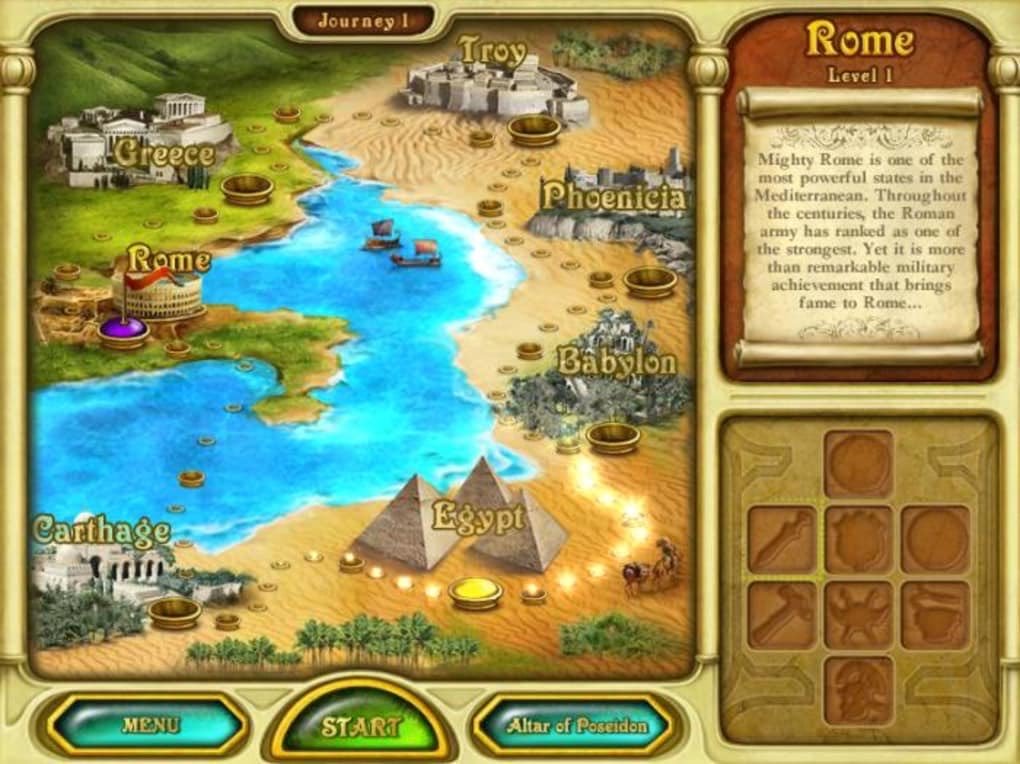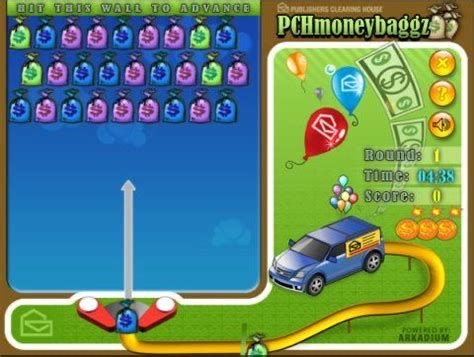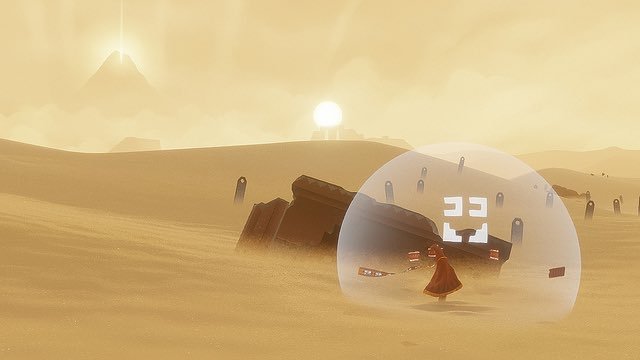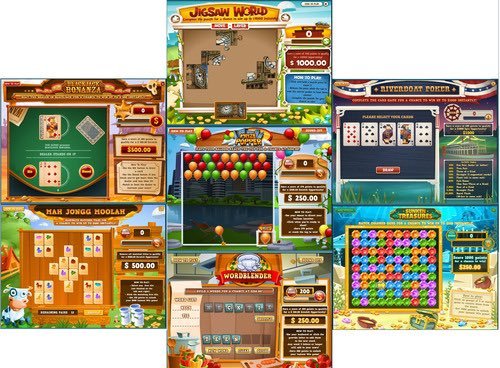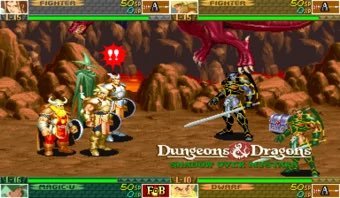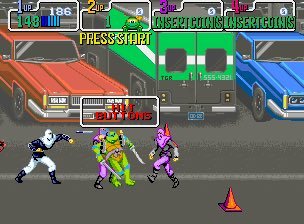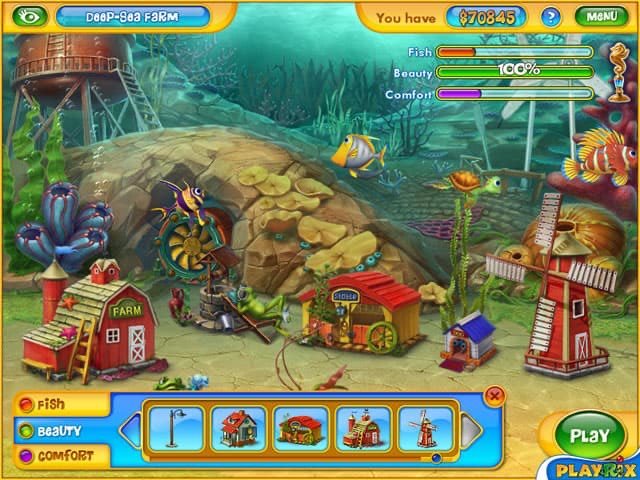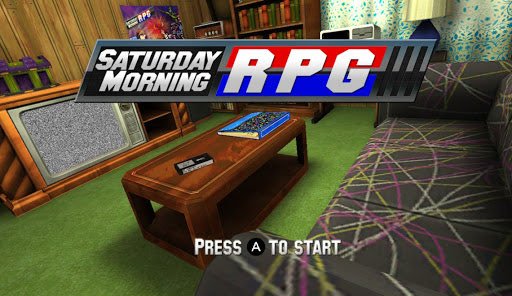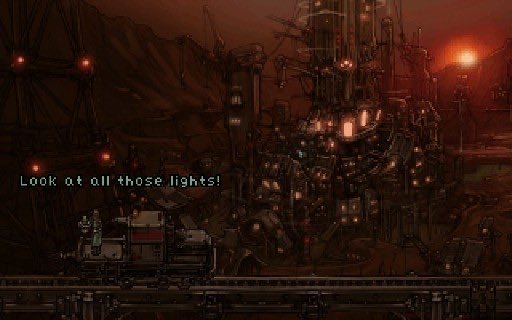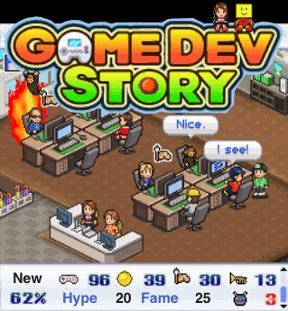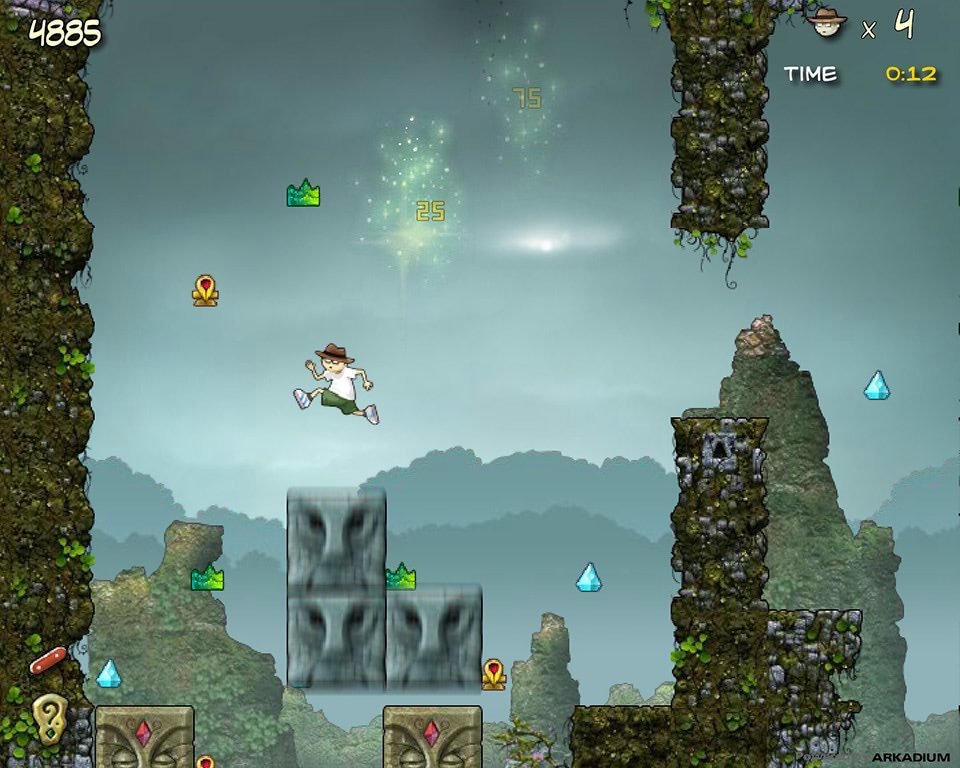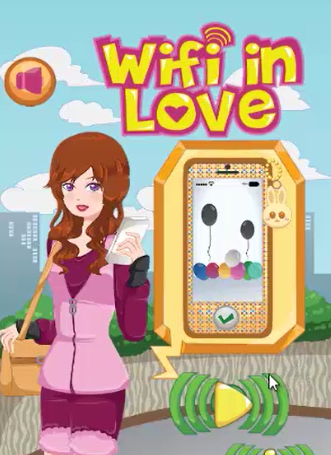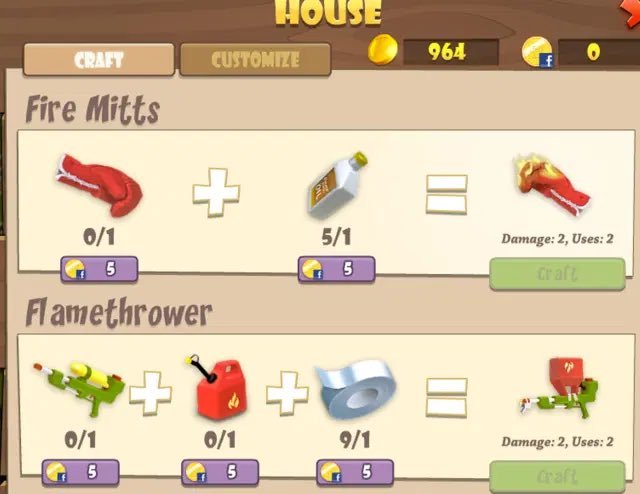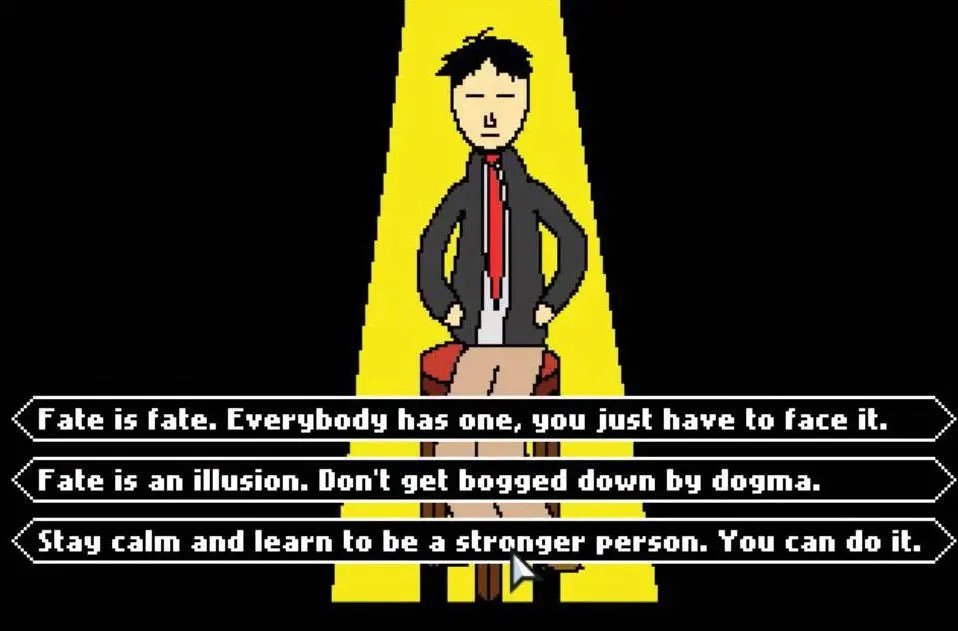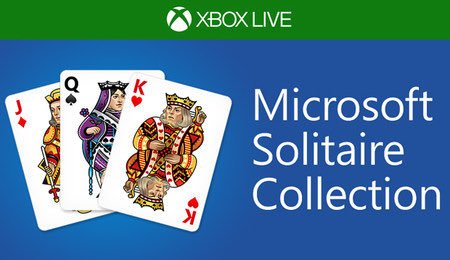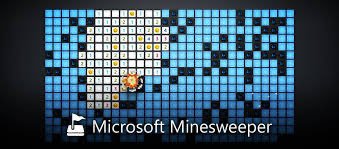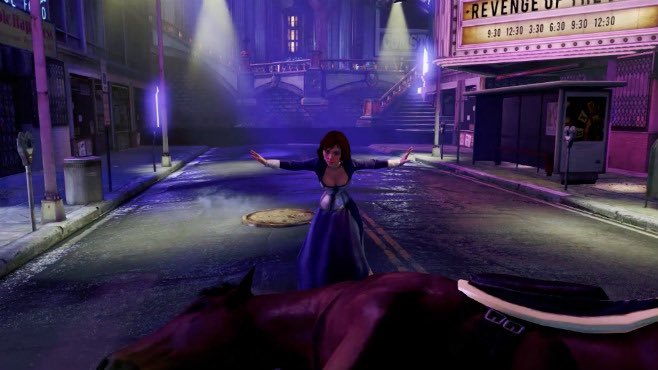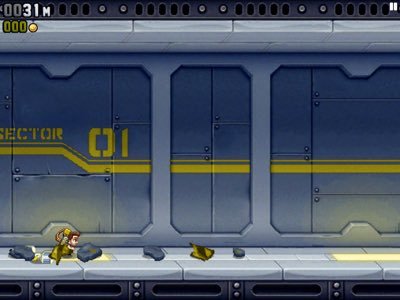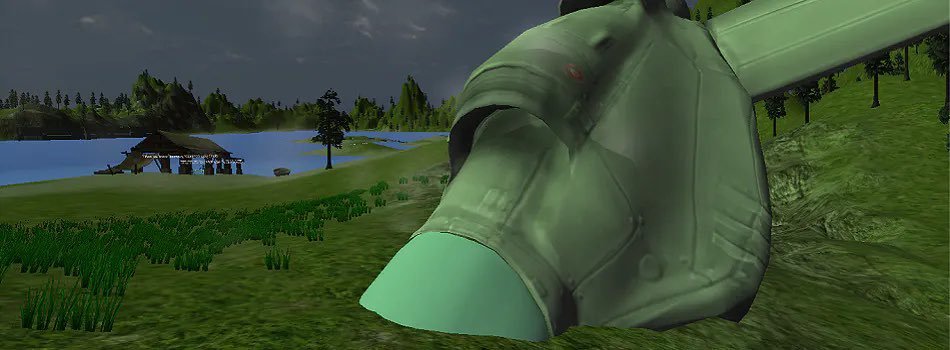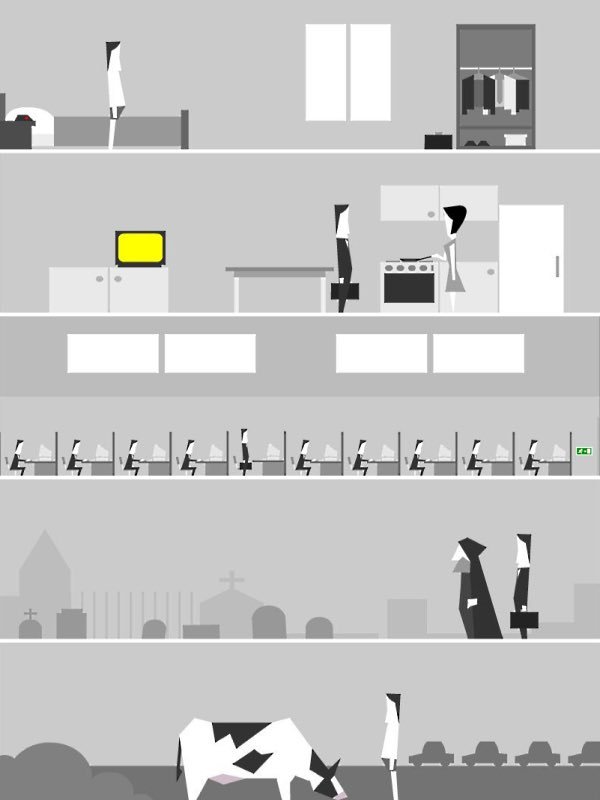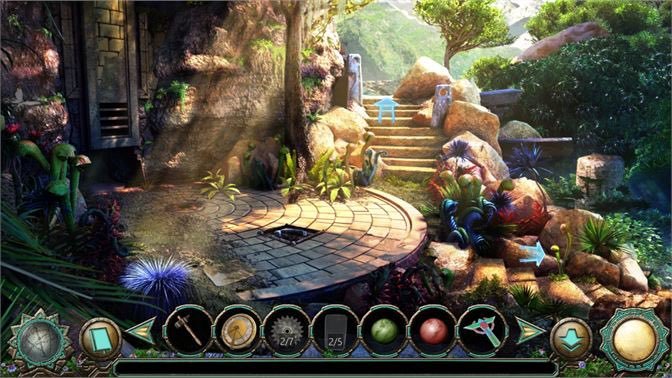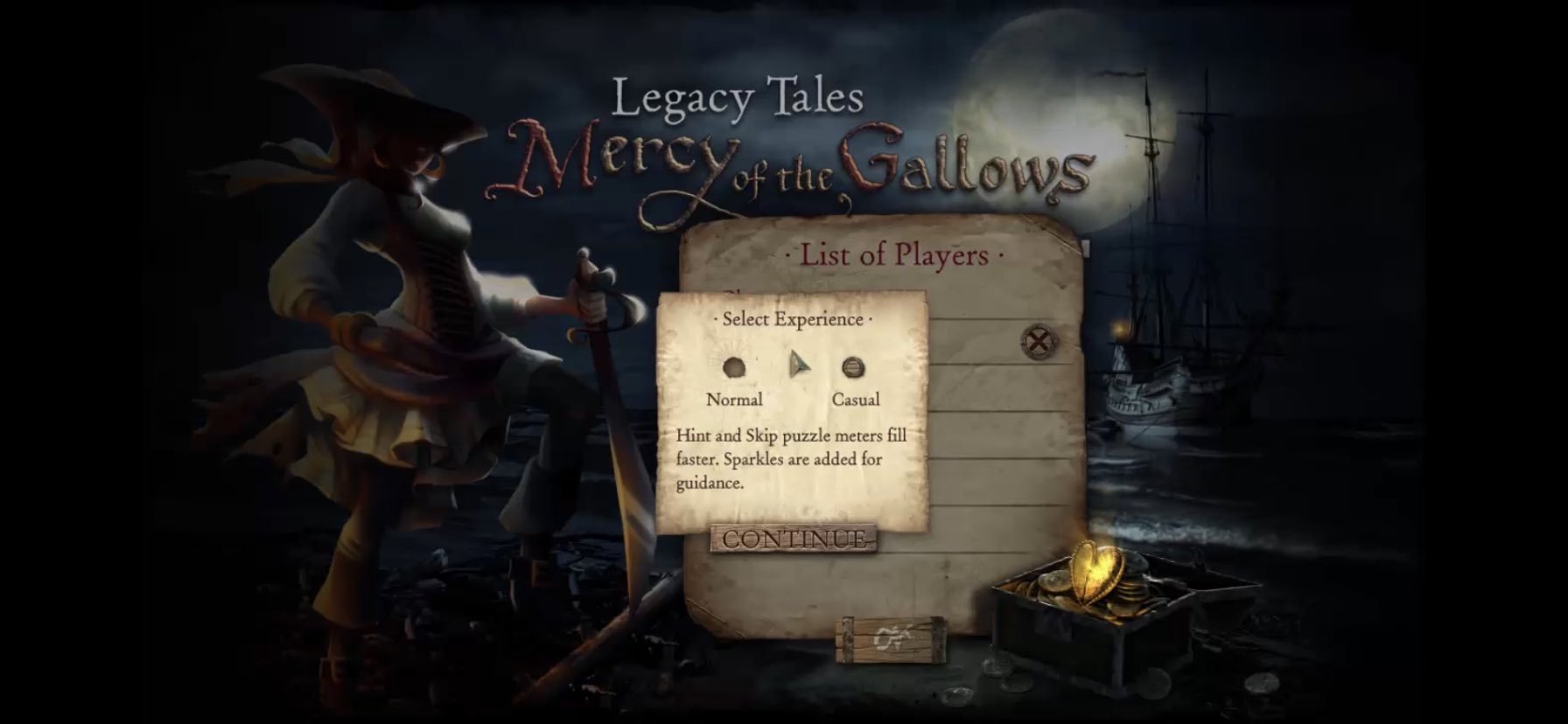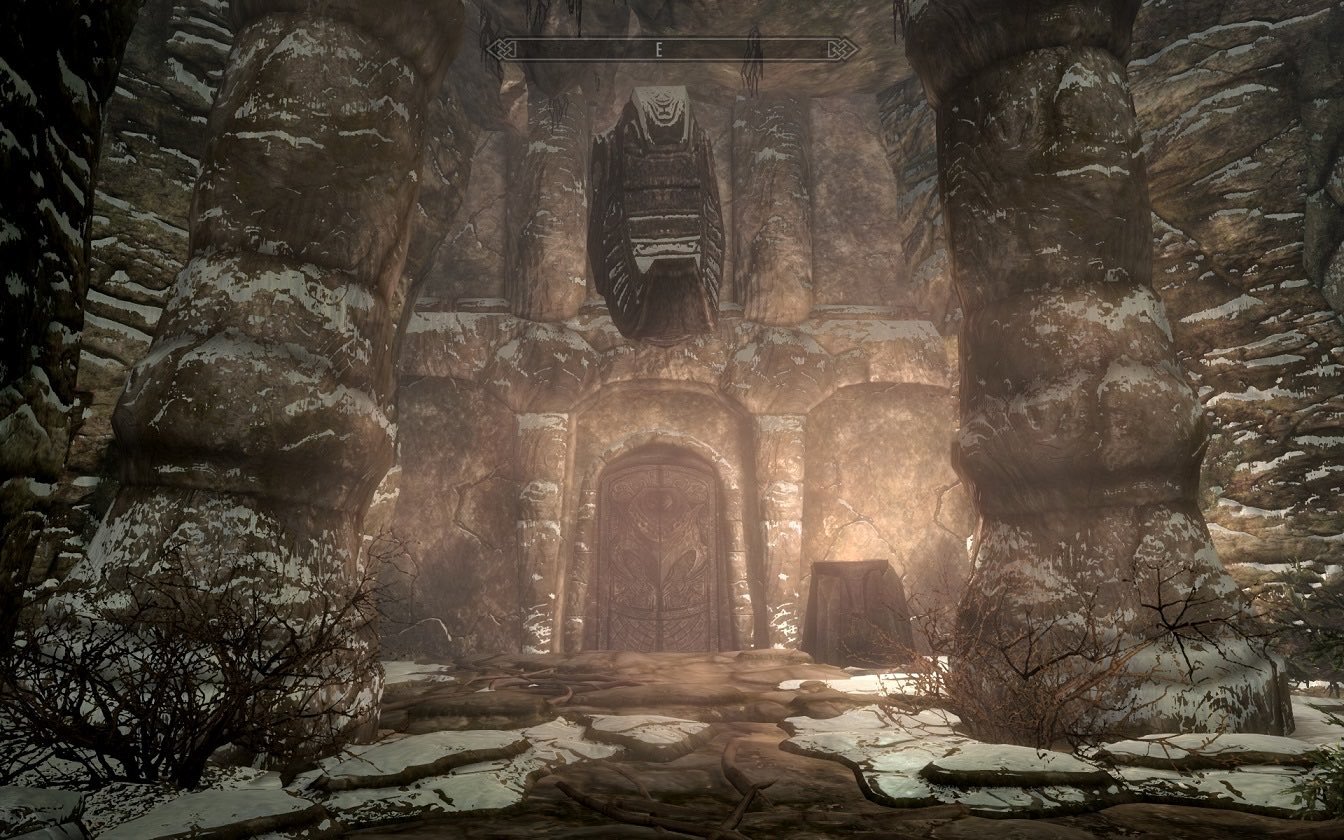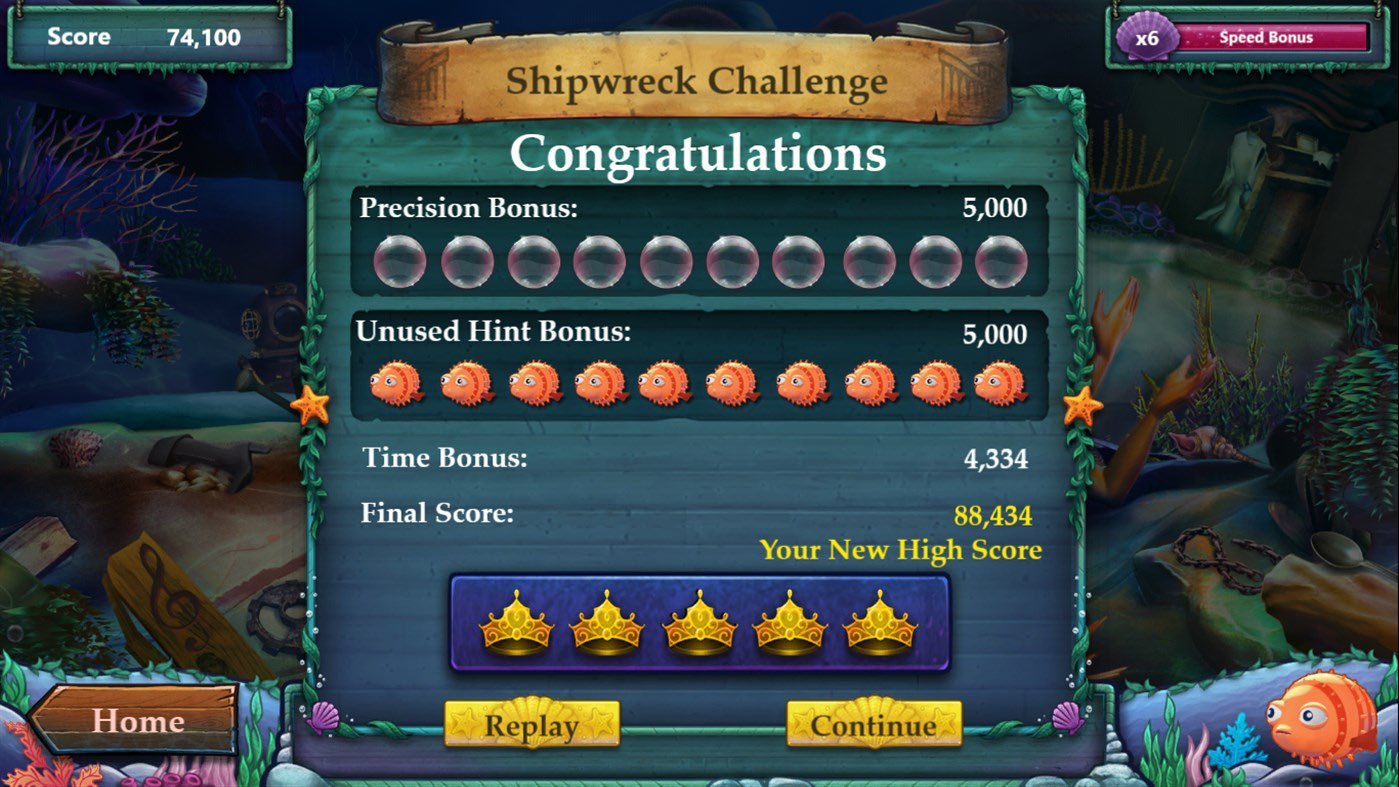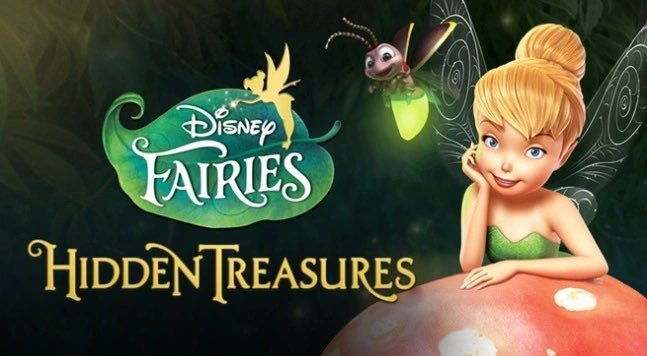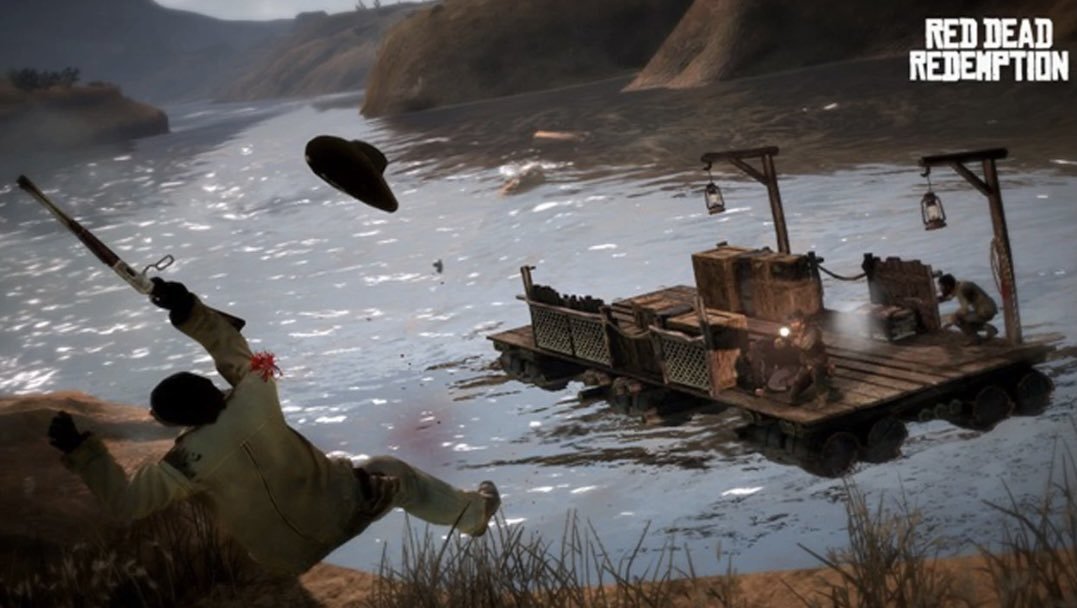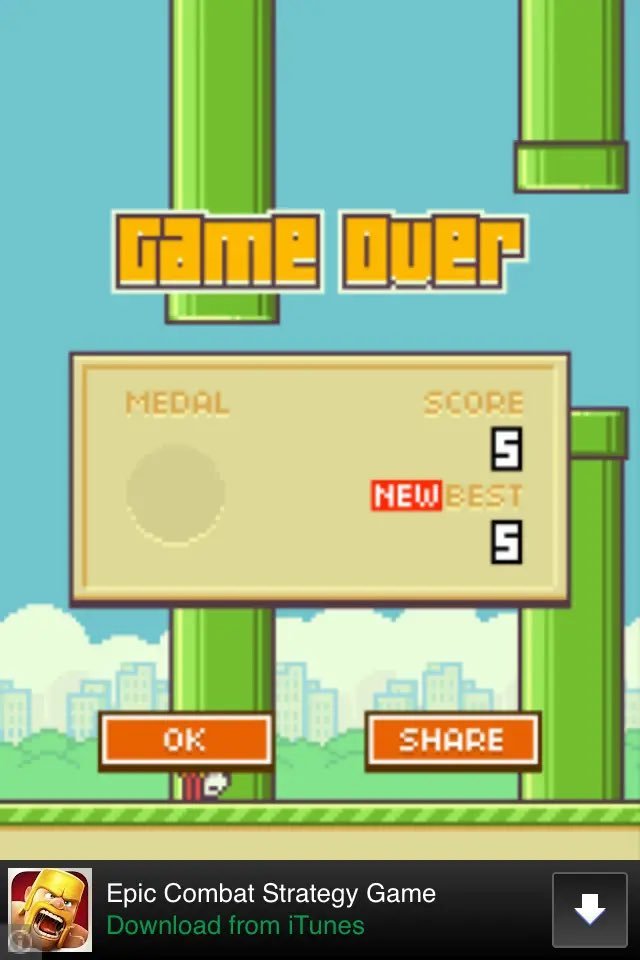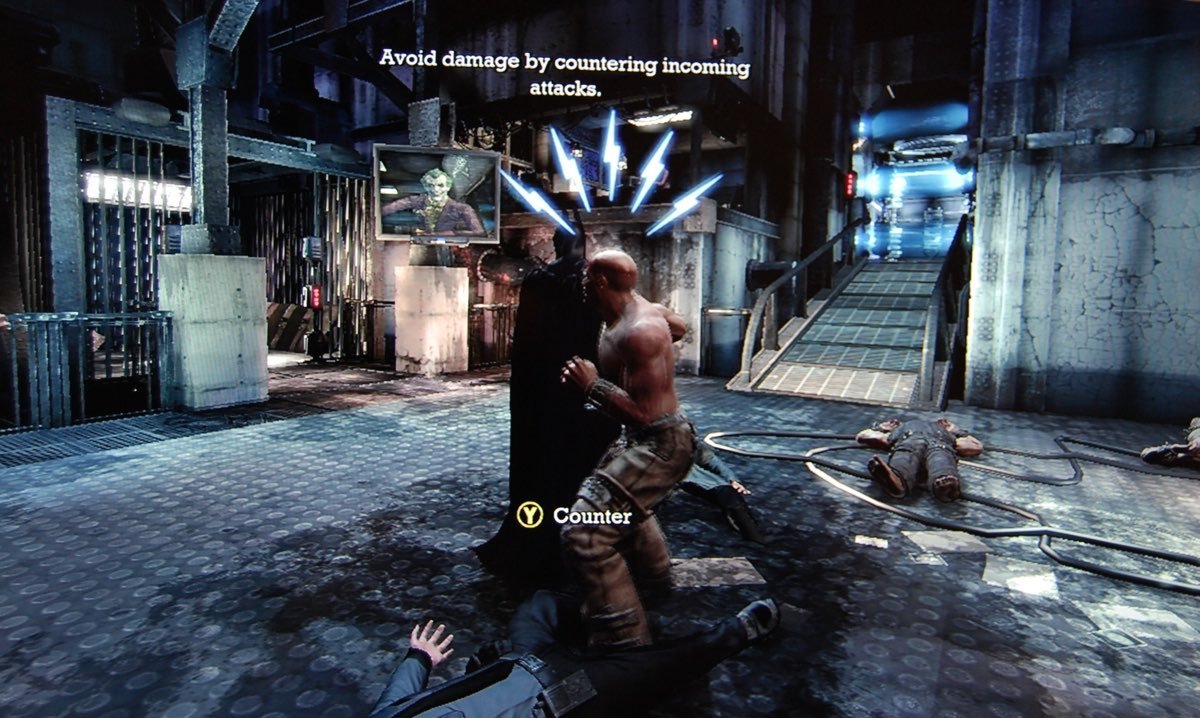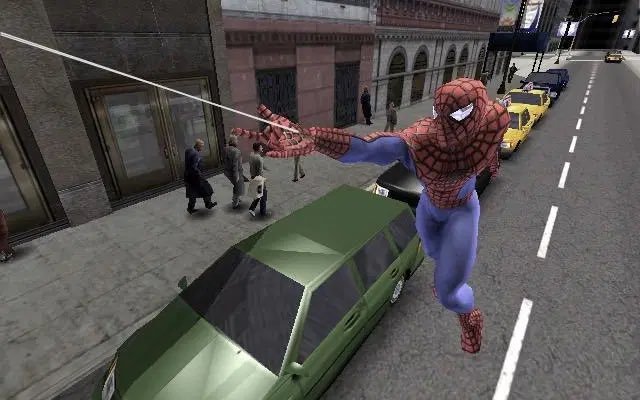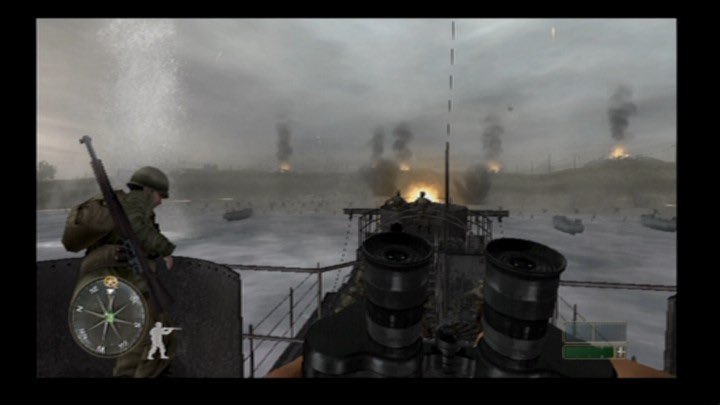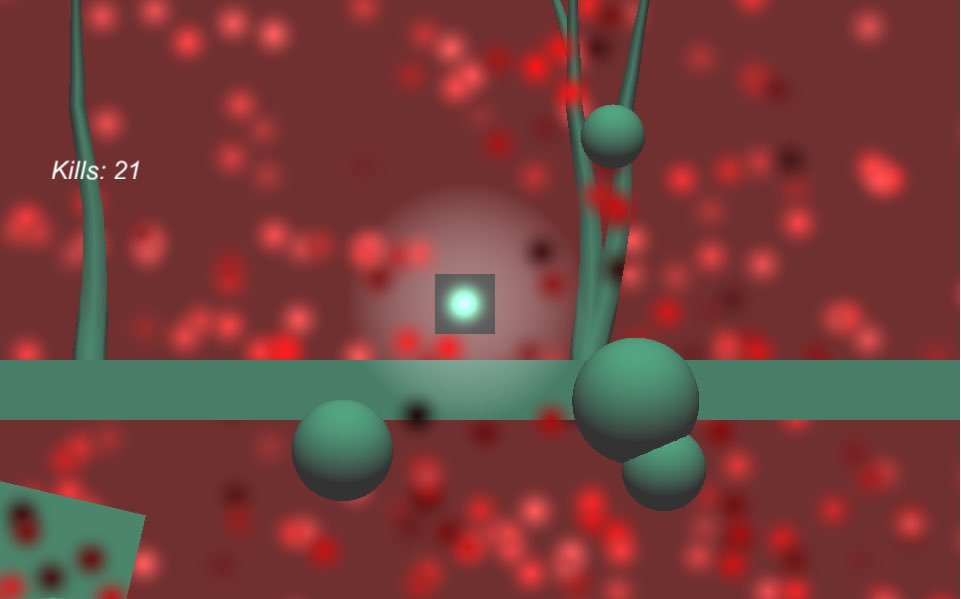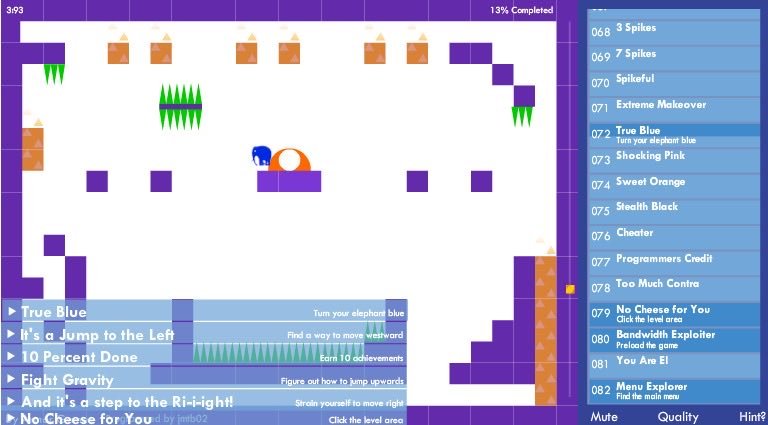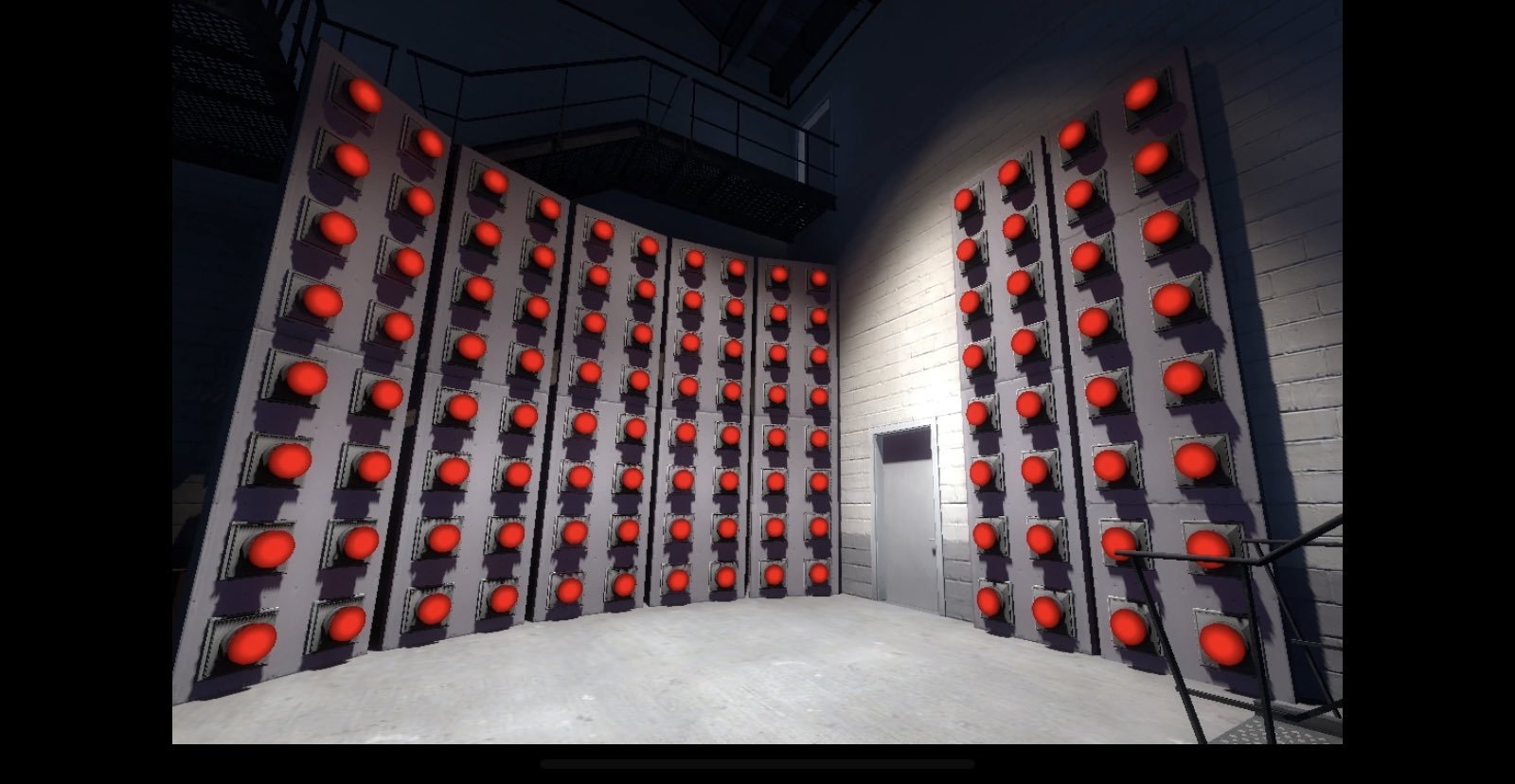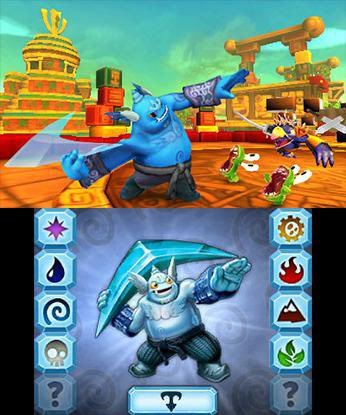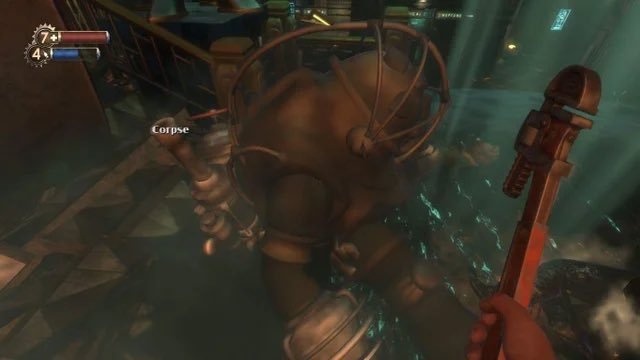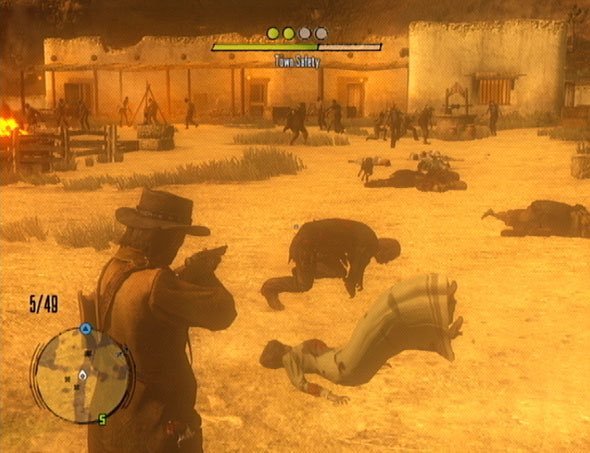
#TheJoyOfGameDesign
10 years ago, I started my career in games & was given this advice:
Play games.
Play Bad games. Play good games. Play weird, free, and even games you’re not interested in.
You’ll make a finite number in your career; learn by playing other games. Now I’m ready to share what I learned.
Lesson 1: Learn how your team defines success. Is it by the number of players? Revenue generated? Distribution across platforms? Momma’s Pizza was 2nd in a series of time management flash games by Funtank Games, and playing this allowed me to ramp up on studio expectations.
Lesson 2: Consider what physics adds to your game. Think of how a baby learns & find the joy there. Things fall down; water pools/clings to surfaces. What would Tetris look like with these forces? The globs in Gluey were fun just to push around.
Lesson 3: Show how far it is to the next goal. This distance can be a physical waypoint to reach, cost for items in a shop, or progress on an achievement. Groundhog D-Day got the “just one more round” feeling by keeping the next goal is in sight.
Lesson 4: Client work can be weird. You know what? I had a different point lined up for Stride Ostrich Patrol, but you gotta call ‘em like you see ‘em. Our studio got paid to make a game where a suit rides an ostrich to sell gum. Go figure.
Lesson 5: Know how to reach your target audience. Youda Survivor is a downloadable casual time management game. They released demo versions of the first few levels to flash portals across the web, since that’s where the casual audience could find it.
Lesson 6: Even losing can be fun. Watching the Rube Goldberg elements of Electric Box 2 was enjoyable even if you didn’t power the final node. Layer that with clean design and engaging puzzles, the whole thing was *chef kiss*.
Lesson 7: Clearly mark the exits. From cameras to world building, it was hard to narrow down Fallout: New Vegas to a single lesson. After 70 hours, I was ready to wrap up. In under 3 hours, New Vegas was independent. Clear exits help keep a narrative thread.
Lesson 8: Understand the expected mechanics of your genre. What does your player expect they can do? Are there engaging ways to subvert their expectations that would surprise or delight? Life is Hard was a microgame about exactly this.
Lesson 9: Know how long your player has to think. Is there frenetic action requiring instant response? Or does your player have the space to consider an infinite number of realities? I am still thinking about my experiences in Passage.
Lesson 10: Be consistent with puzzle solutions. How many ways can you solve it? At launch, Electric Box had some puzzles that didn’t require all the elements to solve. After confused player comments, I got to re-design these levels!
Lesson 11: Add distinction with color. Is your sprite supposed to be cherries 🍒, or music notes 🎵? Unlike other picross games, Picma utilized multiple colors, making puzzles more engaging & the end picture more impressive.
Lesson 12: Be intentional with breaks in your core loop. Blockular didn’t have traditional score screens or level select-you leveled up and the board re-loaded. Remove barriers where you can if you want that “just 1 more round” feeling.
Lesson 13: If a publisher or journalist passes on your game, it’s not personal. I played all the way through Tanooky Tracks, but didn’t license it for our site. The decision was entirely based on audience fit.
Lesson 14: Hexagon tile maps for the win. Strategy games, sure you’ve heard of. But in a word-building game? Sure! The hexagon map is easier to navigate and allows for more board designs that a standard grid would, as is shown in Virble.
Lesson 15: Given the opportunity, everyone plays games. Maybe not *your* game & certainly not all games. But I challenge you: find someone who says they don’t; then check their apps. Angry Birds was the face of fun for many “non-gamers”.
Lesson 16: Clean visuals reinforce clean design. Take a screenshot and let your eyes unfocus. Can you tell what the goal is? Partnering colors with shapes & clear use of negative space indicate where pairs can be made in Match Maker.
Lesson 17: Give players’ long-term goals short-term threats. Does momentary gameplay support overall plans? Purposeful interruptions can force an adaptive strategy. Army of Darkness Defense had Ash’s hero moments & planning with knights.
Lesson 18: Iterate on your Design Documents too. Does your GDD contain more than it needs to? Are there enough wireframes and illustrations? When working on Laundry Day, I refined our documentation to about 2 pages of pertinent info.
Lesson 19: Horror can be all about timing. How long does your player have to respond? How quickly do you jump into the action? 5 Days A Stranger does a nice job introducing the play space and choosing when to introduce its evil elements.
Lesson 20: You will work on projects that get canceled. A change in management or other circumstances means your work gets cut. It can suck, but you’re not alone. Wedding Town was shelved in final QA passes as the studio focus shifted.
Lesson 21: Calculate your top leaderboard score before launch. Someone may only find fun if they’re cheating. Have a plan to cut bad actors. It’s fun to score the theoretical “perfect run” including edge cases/time bonuses/multipliers/etc.
Lesson 22: Your game’s title is potentially its strongest marketing tool. You may not be sure what a Horizon Zero Dawn or Death Stranding is, but I *guarantee* you know what you’re getting with a game called “Don’t Shit Your Pants”.
Lesson 23: Utilize nature to convey the strengths & weaknesses in your mechanics. Are there elements or animals that match your play experience? Familiarity can convey a lot. Cursed Treasure leveraged distinct biomes for tower placement.
Lesson 24: Condense the play area over time to drive up tension. Limiting the map size increases the chance the player encounters an obstacle & reduces their reaction time. It’s a core part of games like JezzBall, Fortnite, & Chisel.
Lesson 25: Tutorials don’t need to be intrusive or include text. People don’t read*. Interrupting with a WALL OF TEXT has less of an impact than sharing info when they’re ready. Fault Line builds instructions into the world.
Lesson 26: A little physics goes a long way. An object with 1 extra bounce before landing can bring exciting tension to your game. Having 2 bounces that randomly fumble a legitimate move can be infuriating. Test carefully.
Lesson 27: Luck & skill seem the same to a player when there is a delay between action & result. “I’m glad that worked!” Games like Chickaboom, Peggle, and (novice level) bowing & pool draw their fun from having the spectacle play out.
Lesson 28: User interface changes can clarify or confuse goals. UI Changes in a “live” game—even well intentioned—can be confusing to players that memorized the old system. Simplified progress bars in Gluey 2 was right for the sequel.
Lesson 29: Celebrate incremental progress. Jak and Daxter is a masterclass, but nothing tops power cell collection. The game auto-saves, there are extra animations, & time briefly stands still: all for competing ~1% of the total game.
Lesson 30: Beware that selling things in-game can feel like losing progress. Yar! Frantic Frigates had you searching the sea for treasure. The ship felt like the investment—not your bank account—so selling to get new parts felt backwards.
Lesson 31: Make your game world robust with night levels or weather effects. You don’t need a full day/night cycle system or complex atmospheric events. Youda Fisherman conveyed the feeing with simple clouds & dedicated dark levels.
Lesson 32: Consider your directions as 'towards' or 'away' from objectives. Traveling right or up are solid standards for player movement. Crash Bandicoot 2 knows when to break these directional “rules” for engaging chase scenes and secrets.
Lesson 33: Every room should have a purpose. If nothing happens in the hallways of your game, cut them out! That’s not to say all of your spaces should be overly large - some pivotal moments in 7 Days a Skeptic happen in the bottlenecks.
Lesson 34: If your goal is to educate, don’t make your game harder than the subject needs to be. ...which leads me to believe-given Super Tanooki Skin 2D’s difficulty- PETA doesn’t aim to educate. It’s all for drama. (Including the use of phallic cats for some reason?🤷♂️)
Lesson 35: When building a studio, think about how the strengths of your current game will improve your next one. Pixelberry has built a solid foundation around compelling narrative-driven games, like Cause of Death and Choices
Lesson 36: Don’t shy away from the bizarre. If Crusin’ World’s ending can have a for-parody-only version of President Clinton in a hut tub on the moon, then you too can justify putting whatever you want in your game too.
Lesson 37: There is an audience for seasonal content. Does your game have assets to help players celebrate any holidays? Not only are players looking, but games like Rocket Santa could be considered by streamers for featuring as well.
Lesson 38: Make your enemy’s field of view easily understood during stealth missions. Is it easy to tell when you will alert the guard? Sly Cooper and the Thievius Raccoonus used flashlights to great effect when showing enemy raycasts.
Lesson 39: Decide which actions are fun, and which one can be auto-completed. Do you have a “sell junk” option with your merchants? Fast travel? Jumping between balloons in Fly Meow was the challenge: no need for a 2nd tap to catch too.
Lesson 40: Reduce player frustration with clear move choices. Don’t say where to go, prevent moves that won’t work. Mah Jongg is hard to get right. Tinted tiles, clear layers, & remaining match count Jolly Jong 2 shows players the way.
Lesson 41: Increase the difficulty by layering risk/reward systems over time. Adding more elements means longer between bonuses. Ninjump had 3 power-ups. The unlock requirements never increased - they just became less likely to obtain.
Lesson 42: Timing & patience are different mechanics. Timing is knowing when to swing so you’ll connect with the ball. Patience is waiting for the pitch. Nutty Boom had a mix of both & did right by keeping levels short to not tax either.
Lesson 43: Dynamic lighting adds life & polish. (Even if it’s faked.) The flash version of Ballery had a spotlight that followed the ball across the board. This light wasn’t included in the mobile port; the resulting game felt flat.
Lesson 44: When blue sky brainstorming, consider blending genres. Soccer & racing? Rocket League. RTS with MOBA feel? Arcane Showdown. Youda Camper mixed time management with city builder for a final result that increased player agency.
Lesson 45: Game jam games are a world of lessons all their own. I know industry vets that look down on the fire-and-forget design process of jams, but To What End was 5 minutes of fun - more so than even some other games on this list.
Lesson 46: Progress doesn’t have to be linear numbers going up. Can players unlock perks out of order? Can they be displayed in an abstract fashion? Castle upgrades in Youda Fairy were tied to game perks & players selected their order.
Lesson 47: Consider a playable ensemble. The player character is an extension of self. A diverse cast of PCs help players see themselves & perhaps even build empathy. Indigo Prophecy (Fahrenheit) splits the story well among characters.
Lesson 48: If there’s no romance, maybe limit how sexy your game is...? Despite the start screen, Belle with Frog Dissection was just a cuttin’ up frogs sim.
Lesson 49: Hit boxes do not have to be a uniform size. Different size pickup areas can factor into item rarity. Smaller colliders could mean critical hit zones. Let it Glow 2 used various sized influence areas to balance physics puzzles.
Lesson 50: Use clear icons instead of words to help localization & illiterate audience. Symbols send a quick message & allows you to read in translations from a separate file. Looking at Royal Envoy, you can see where you can’t build yet.
Lesson 51: Be aware of the ways technology can improve your development process. In the past decade procedural generation filled out content, automation allows for more test cases to run, and Space Station Invaders was co-designed by AI.
Lesson 52: Prolonged touch control is tricky to get right. Try to stick to tap/hold/flick whenever possible. Friction & finger drift are a sneaky duo. Breakout Boost struggled to capture the motion & control that made the original fun.
Lesson 53: History is an accessible framework for both mechanics & players. Okay, *technically* I learned history is a great IP while at Big Huge Games, but Gems of Atlantis did a good take on this with their overworld map & match 3 icons.
Lesson 54: If you’re using an established mechanic, your audience will compare it to a game they’ve played before. Is PCHMoneybaggz objectively better than Snood? ...who can say? Is is *subjectivity* better? No.
Lesson 55: Treat P2P communication like any other mechanic introduced. Even if WASD is common practice, it’s still in the tutorial. Why don’t we teach polite chat & text? Journey’s interactions are chirps, limiting abuse of the system.
Lesson 56: A robust back catalogue can help your studio survive. “Well duh,” you think. “If you’re shipping, you’re surviving.” It also means *planning* incremental releases. Youda Legend was 1 of many in a series licensed to Candystand.
Lesson 57: Power & preparation is the difference between action/horror. Do players have tools to respond against threats on the fly? Is there enough ammo? BioShock 2 felt great to dual wield weapons/plasmids, but also changed the tone from horror towards action.
Lesson 58: Consider using timers for mini-games. Beyond letting the player know how much time is remaking, it’s an easy-to-understand basis for combos; plus you can add leftover time as a bonus if they clear the board.
Lesson 59: Get legal involved early on sweepstakes/giveaways. No one wants to be sued or have an entertainment app tagged as gambling. Having a set play length + knowing language to use/avoid made the design of minipath games easier.
Lesson 60: Your genre isn’t defined by the platform. Conventions exist for a reason, but it’s possible you may fill a niche. Dungeons & Dragons: Shadow over Mystara is a full arcade RPG w/ branching story, lvl system, & equipped items.
Lesson 61: Repeat context-sensitive tutorials. Does your player know what to do in a moment of crisis? Is there a key element playtesters miss if not reminded? Teenage Mutant Ninja Turtles had escape instructions whenever grappled.
Lesson 62: Scrolling backgrounds (parallax) convey speed & direction more than your character. A particle trail couldn’t hurt though. The player understands flying, so no need to add extra animation to birds, planes, or even Superman.
Lesson 63: Intentionally plan the hints. Have a set number to hoard? Do they refresh over time? (Both have the same per level but feel different.) Are they consumable? Hints replenished faster in The Stanwick Legacy for successful finds.
Lesson 64: You don’t need to introduce the endgame at the start. Sure, saving the world can’t wait (unless you’re crafting or fishing). However, setting & beating incremental goals allows for focused storytelling & paced mechanics.
Bonus April Fools Day hot take Played the Duke Nukem Forever demo. Would you like to know what didn't hold up after 12+ years? THE PERSONAL COMPUTER. SERIOUSLY. The family machine of the 90’s > my late 00’s work machine running software for that era.
Lesson 65: A recommendation goes a long way. Many of the games on this list were suggestions from various sources - some even leant to me. They don’t need to be personal. I played Loneliness based on an Extra Credits video
Lesson 66: Don’t design hidden away in an ivory tower. Involve your players where you can. Put out a poll asking what color sneakers the units wear. Give them A/B options. Little things go a long way in having players feel connected.
Lesson 67: Have your text parser look for synonyms & common misspellings. Scribblenauts Remix’s text input mechanic is less frequently found in other modern games. However(!) it’s likely this could be useful for designing chat filters.
Lesson 68: Unless designing a hidden space, be clear where players can explore. Will they die falling down a pit? Is there an adjacent screen to go to? Find it! was a hidden hidden object game where you could open cabinets & drawers.
Lesson 69: Progress your metagame with success in your core loop. This is full of terminology, eh? It ultimately asks: does completing a puzzle yield a reward or just more puzzles? Fishdom 2 had a customizable tank after winning rounds.
Lesson 70: YOUR GAME DOES NOT HAVE TO BE VIOLENT. All caps, baby. You don’t have to cut it, but are there other options? It’s hard to make someone feel smart. If you do, it will stick around longer than the power fantasy of the gun.
Lesson 71: If your core mechanic is set (& theming allows) consider an episodic release. A number of players never make it to the end, so why not polish your Minimum Viable Product? Saturday Morning RPG had episode 1 free at launch.
Lesson 72: Video games are the renaissance art of this generation. That is to say, games are a combination of literature, coding, film, music, dance, storytelling, art, architecture, math, & more. Play Frog Fractions. It’s an experience.
Lesson 73: Select the audio early to build it into your levels. Are your sound effects in the same key as your soundtrack? Are tracks used to convey the feeling to the dev team? Rayman Origins’ music & levels are equally fun to explore.
Lesson 74: Well written hints are best shown *after* an attempt is made. Don’t be too forthcoming with solutions. Don’t be too vague when an attempt fails. It’s a delicate balance. Primordia has cleverly written characters & direction.
Lesson 75: Don’t abruptly start/end cutscenes. I get it. You want to follow the action so a player’s punch flows into the big pre-rendered moment. However, if the player doesn’t realize the cause, they could stuck in a fighting mindset.
Lesson 76: Games about games demonstrates medium is growing as an art form. Norman Rockwell’s self portrait, “Sell Out” by Reel Big Fish, the Broadway show “The Producers”, & Game Dev Story each provides a fun look behind the curtain.
Lesson 77: Offer a way to reset player progress. Starting over can feel great: mastering easy challenges & making informed late game Decisions. New Game/New Game+ is 1 way to handle this. The other way to provide that feeing is a sequel.
Lesson 78: Games make excellent empathy engines. Dys4ia does a better job at sharing the experience of transitioning than other media could. The mini games are well paced, since getting to the end of the story is part of the message.
Lesson 79: DO NOT ship without the option to invert the Y axis. (Realistic flight sims exempt.) Don’t let exciting moments be a panicky mess of overthinking controls. Also, boost doesn’t act like secondary fire, so map it to a differently.
Lesson 80: You can have a big impact in a small genre. Featuring is good, but be aware of your player cap. Dethtris, the Tetris-inspired platformer was an odd choice for Publishers Clearing House, but it stood out among the casual mahjong & card games.
Lesson 81: It’s more than just card games that do well digitally. Paper doll dress-up games were the top of the “games for girls” category of flash games. The more recent game Gartic Phone is a well done version of Broken Picture Telephone.
Lesson 82: Plan your end of service with care. ✅Announce sunset date in advance. ✅Schedule offers to spend premium currency. ❓What are you doing to honor the game? Indiana Jones Adventure World had special quests as a memorable end.
Lesson 83: Believability is better than realism. Inevitably, someone will suggest a feature “isn’t how real life works”. But to some degree, ALL games are abstractions. Was 5 Minutes to Kill (Yourself) realistic? No. Believable? Yes.
Lesson 84: Resource management impacts how players view the word. No info on collecting stuff encourages exploration, but can cause confusion. Zombie Lane themed resources to Zed-types, allowing players to pursue the gear they wanted.
Lesson 85: Mini-games make good pre-order incentives. “But Greg, we’re already making one! We need to ship one ahead of that?” You’re not obligated, but a game from you *is* what they want. Bioshock Infinite introduced their world & art with this pre-order webgame.
Lesson 86: Do the paperwork when you can so you can be inspired later. When writing quests for Chef Quest, I spent office hours with copy edits & CMS updates. That freed me to take creative notes when traveling, showering, or at the bar.
Lesson 87: Mentoring encourages future developers & can fight impostor syndrome. Hour of Code is held each Dec. Check your area for other groups/opportunities. Sissy’s Magical Ponycorn Adventure was a father/daughter collaborative effort.
Lesson 88: Present the player with complete dialogue choices to preserve immersion. Don’t take your player out of the moment with surprise text. Inner Vision was a game built around talking about depression: a subject where words matter.
Lesson 89: Turn-based multiplayer needs a strong callback. Asynchronous design prevents lag in the gameplay, but not from the game. Consider player notifications & social media. Playing Hero Academy with coworkers had built-in social cues.
Lesson 90: 3 attempts allow your player to guess, over correct, and then master the task. When picking a number for a repeated objective, why not start with 3? Mario bosses, baseball strikes/outs, and repeated jokes all hit 3 times.
Lesson 91: Call out parts of your design that are placeholder or people will assume it’s intentional. I did a game jam in 2013 where I only had a pen and two highlighters: 1 blue & 1 magenta. You already know the game’s final colors.
Lesson 92: Layer risk & reward scenarios to let players adapt the difficulty. Example: Sly 2 Risk-Getting caught by the guard. Reward-Keep distant, keep HP. Risk-Miss out on pickpocketing. Reward-Chance at 💰/🔑. Risk-Long guard exposure.
Lesson 93: Consider everything before a big live game rebalance. You need 2 things for rebalance: • planned support for players/staff • a damn good reason Even compensated players can feel disoriented. Support your community manager.
Lesson 94: Push the player to periodically refine their strategy. Man, all of Plants vs Zombies is designed so well you could look to any part for best practices. The introductory pacing of attacker/defender nicely prevents a single “best” strategy.
Lesson 95: The experience you build is more important than the tools you use. I listed Arkadium earlier with Flash-based card games. They likely used something else for Microsoft Solitaire Collection. Your engine should help you ship.
Lesson 96: Think of possible achievements during the design & development phase. Knowing which player moments to highlight & reward is more apparent when you’re building the experience. Utilize the platform’s achievements when possible.
Lesson 97: First move sets the mood. 1st player often has an advantage in multiplayer games. (Go even altered its rules to mitigate this.) Microsoft Minesweeper begins play where the player clicks first: inspiring confidence or caution.
Lesson 98: Your game is the spiritual successor to your demo. Remix. Add custom text. Show off big moments. Cut material after the show if it doesn’t land. The Bioshock Infinite E3 moments weren’t shipped, but it *felt* like they were.
Lesson 99: Provide space to test the controls. Your player may be destined for greatness, but your player need to walk before they can combo. Jetpack Joyride has one button & still lets players get into the groove before offering challenges.
Lesson 100: There is a time for theory and a time for praxis. Remember: game devs make games. Test Flight-a walking sim with horrendous load times-was the 1st solo game I released on Game Jolt. It’s bad but I was proud to ship something.
Lesson 101: Let the player provide the names. Unless you’re trying to preserve a high fantasy atmosphere, it’s totally okay to have SIR BUTTFART as the hero of the realm. Each release in Game Dev Tycoon was special because you named it.
Lesson 102: It never hurts to have a cute mascot. It was a major factor in the console wars of the 90’s, & a big consideration for merchandising. Cut the Rope’s Om Nom tugs on your heartstrings - especially if you fail to feed him candy.
Lesson 103: Social norms are treated like rules until prompted otherwise. Remember to account for & plan around constructs. The lines on the road may just be decoration. Every Day the Same Dream asks what happens when you buck the trend?
Lesson 104: Aiming markers set the difficulty; consider using them sparingly. The more accurately you show how an action plays out, the easier the experience. Flip and Go shows a shadow where your alien will end up when the world flips.
Lesson 105: Text & voice combo is more powerful than either alone. Voiceovers may suit your budget/genre better than fully animating characters. Try recording a scratch track for pacing. Adera used V/O to keep players immersed.
Lesson 106: If players can share *anything*, have a way to log & edit/delete content. Curiosity: What’s Inside the Cube? allowed players to delete layers in whatever pattern they wanted. (Turns out, it was lots of unsolicited dick bricks.)
Lesson 107: Double-check all URLs. The old adage “the internet never forgets” is *mostly* true, but don’t test that when providing links to future employers/publishers. Know where there are reviews/videos of the game if it was sunset.
Lesson 108: Local multiplayer builds bonds. Couch co-op isn’t just regular players: they are family & friends. Can you strengthen their relationships through play? I completed Halo: Reach with Dad. I was a groomsman to Super Smash Bros friends.
Lesson 109: Telegraph new attacks by slowing down time. Give players the time to ask “WHAT IS THAT?!?” as they frantically respond to the new threat. Tank shells & bombs were slowed down in ImmorTall the first time they were introduced.
Lesson 110: You can’t do it all yourself. There will be things needed, but time/budget/experience reasons means your team needs external help. Consider updating it later. We replaced games on Candystand but didn’t have to with Solitaire.
Lesson 111: Representation matters. Everyone deserves to see themselves in a game. I thought I’d only confront mortality while managing my heart condition & awkwardly trying to pick up girls IRL. Thanks for the awkward, familiar digital experience Katawa Shoujo.
Lesson 112: Reduce pixel hunting. Legacy Tales: Mercy of the Gallows clearly called out where VFX would be used for guidance, changed the cursor on mouseover, and overlaid a pointer when using tools so players knew where to look & click.
Lesson 113: F2P monetization is hard to layer onto a finished design. Teams pivot to keep current with trends, but existing IPs risk alienating their fans with too strong a paywall & are stuck with a difficult task of balancing fun per $.
Lesson 114: Save time with circular dungeon design. Exiting at the entrance saves backtracking. Don’t leave players wondering: “why don’t I take door #2 directly to the boss?” A final guard/lock/tiny puzzle makes it feel like a shortcut.
Lesson 115: There’s more to life than just going right. Can you surprise the player with movement? Can they explore left or vertically? Golden Axe: The Return of Adder & Contra added forward movement, similar to that of 2D racing games.
Lesson 116: Giving directions is hard. Do you provide a written/verbal guide? Marks on a map? Compass points? Is it too heavy-handed? Burial at Sea used green arrows since the character (not the player) would know the shops in the area.
Lesson 117: Share performance stats & personal bests. Did you add a high score challenge for some just by letting them know they beat a personal best? Yeah you did. 😚👌 The deeper your design, the more some players will want the stats.
Lesson 118: Your game is your studio’s ambassador. An ex-Hit Point engineer was surprised I knew Fairies Hidden Treasures & The Little Mermaid Undersea Treasures since I wasn’t the target demographic. Both had good use of IP + polish.
Lesson 119: Ragdoll your outlaws. While most games encourage players to minimize threats quickly, Red Dead Redemption rewarded players for winging enemies in the leg or shoulder. Floppy player deaths are also great streaming content.
Lesson 120: Keep your monetization unobtrusive. Do you interrupt gameplay to show an ad? Flappy Bird ran banner ads that were situated away from the core gameplay. More common now is incentivized ads, showing a video for a known reward.
Lesson 121: Do you *need* a game over? How much punishment do you place on failure? Is a setback enough? The Maw was delightful all the way through. While there were obstacles to overcome, it was never spiteful to the player.
Lesson 122: Consider a white label version of your game. “White Label” is a neutral version that can be branded in different ways. Licensing isn’t for every studio. It also doesn’t have to be commercial. Can you build a charity version?
Lesson 123: “Dead” genres are likely just sleeping. Even when “point & click adventure games were dead”, the escape room genre was popular on the web. While games like Bear Escape were story-light, the inventory puzzles were on point.
Lesson 124: A shader can signal interactions while preserving atmosphere. Nobody likes stumbling around in the dark for more ammo. The Bioshock series (among others) balances a moody world with clear pickups thanks to a brief flash.
Lesson 125: Test on device. The hardware performance could vary greatly on the target platform. It’s good that the game works on your machine, but do you know where people aren’t going to play your game? On your computer.
Lesson 126: Anticipate repeated or erratic inputs. What happens when button spamming? Can a move be interrupted to begin another? Batman trained to be the best, but your player hasn’t. Understand their inputs so they feel like Batman.
Lesson 127: Diverge/converge puzzles to pace gameplay. Present multiple puzzles to give players freedom on where to start. Funnel down to 1 for story beats. Clockwork Tales: Of Glass and Ink weaved puzzles & locations to great effect.
Lesson 128: Make movement enjoyable. The thing your player does - more than combat/crafting/anything else - is move. Is there rhythm in tapping to run faster? Chaotic dodge-rolling all over the place? Spider-Man 2 nailed webslinging.
Lesson 129: Allow local multiplayer to be a spectacle. On the show floor, local multiplayer games garner the most attention. However, a crowd isn’t likely to appear in the living room. It took a big event to beat the 6-person X-Men game.
Lesson 130: State-based loot tables keeps things balanced as play evolves. A health pack when wounded > a mountain of bullets. Do players have a chance to get what they need when they need it? No one needs a blue shell in 1st place.
Lesson 131: Briefly limit choices to challenge adaptation. What happens when you take something away? Once at a mall kiosk, the controller’s trigger was broken. Without the ability to shoot, my choices were: run, melee, or grenade. Fun!
Lesson 132: Friendly fire establishes boundaries of cooperation. Are players invincible to each other? Do they take collateral damage? Can they die? A playful nudge in Battleblock Theater could complete a level or knock you to your doom.
Lesson 133: Embrace the happy accidents. It’s not a bug, it’s a feature! 😉 While I didn’t work on Suddenly, Thousands I could see how controlling multiple characters with 1 input could be emergent design when trying local multiplayer.
Lesson 134: Reduce all distractions during key attacks. Lots of games will set the timescale close to zero to slow down a big moment. Michael Jackson’s Moonwalker effectively does the same, as all enemies stop attacking to dance along.
Lesson 135: Start from where your player can understand. Affordances are often discussed in designing physical goods. Can a player know what to do by looking? Onomastica’s based play on using words as the nouns or verbs they represent.
Lesson 136: Having multiple valid choices doesn’t always increase the chance of success. Gunstringer: Dead Man Running had obstacles with many ways to get around them. These split-second decisions could lead to analysis paralysis.
Lesson 137: Have enemies counter kiting. If enemy speed < player speed & they indefinitely follow the player, your bad guys line up to be destroyed. In Holdout., enemies spawn around the player, eventually forcing a different tactic.
Lesson 138: If it’s a collectible, make it impossible to miss from the start. Santa’s Sleigh Dash was a touchscreen window display game at the NYC Macy’s, Christmas 2014. The sleigh was HUGE on screen, helping the everyone learn the game.
Lesson 139: Breadcrumb your desired player experience so they can see where to follow. Achievement Unlocked was all about, well, achievements! A savvy player could earn several at a time once they understood what was being asked of them.
Lesson 140: Game mechanics are not subject to copyright. The internet can be an unkind place. If you’re successful, people will look to “fast follow” your design. You can make an homage to a classic, but try & add something new or novel.
Lesson 141: A threat radius can be dependent on camera angle and art. Increasing how far a player/enemy can deal damage is a good tool for balancing combat, but can look different in 2D, 3D, and 2.5D games (like Coors Light Refresh-Men).
Lesson 142: Utilize the pattern-seeking nature of the brain. Repetition is a bare minimum requirement for giving feedback. Players naturally look for links between repeated sounds or assets if there is little else to go on.
Lesson 143: Expand depth of outcomes with critical success/critical failure. Are things bad or REAL BAD? 🎲 Orion Trail increased a chance at success via character stats or crew members, but critical pass/fail was always a possibility.
Lesson 144: Move the camera to focus on action. Pan. Screen shake. Zoom. The camera is the player’s view on the world; use it to show them the exciting things. It’s where they’re looking anyhow. Peggle 2 focuses nicely on that last peg.
Lesson 145: Don’t limit yourself to “realism”. No one can double jump. Make choices in line with design goals-don’t be beholden to what works IRL. Katamari Damacy delightfully toys with the environment not taking anything too seriously.
Lesson 146: Expand the options of self expression. Sure, some players aim to give the “best” choice (for the most points) but many play to make the experience their own. Romance Central-a Dance Central April fools gag-had varied choices.
Lesson 147: Word choice matters. Sometimes, words are all you have to convey your idea. In games, in tweets, in conversation. Choose ‘em carefully. The Writer Will Do Something is a poignant text game about shoehorning in story.
Lesson 148: Checkpoints are tricky to balance. Too few: punish players by having them re-do lots before the tricky part. Too many: force players to live with all mistakes. The Pony Express Google Doodle quickly got back on the horse.
Lesson 149: Mind the grind. Deliver on the core fantasy of your game *every session*. I played through Pokémon (Blue) in 30-45 minute spurts while commuting to NYC. Every session, I caught or evolved a new species and/or earned a badge.
Lesson 150: Mentor others. Being a mentor is easier than you think & combats impostor syndrome. I volunteered to help high school students during a game jam as they made Monster Thurst! - an endless runner about a *very* thirsty monster.
Lesson 151: Devote resources to your unique points. Tired: Regular Simulator Inspired: Animal Simulator If you game’s fantasy is something that players can’t get anywhere else, you’re likely to get eyeballs.
Lesson 152: Provide reminders between sessions. It’s hard for players to pick up after a long absence. Pre-written journal updates (RDR2) work too. Sudoku Deluxe allowed you to note guesses (in the margins) & pick up where you left off.
Lesson 153: You can’t force a flow state. And you *especially* can’t force it on new players by telling them to be quick & accurate. Flow is when play happens without thinking; it’s when players are relaxed & familiar with the mechanic.
Lesson 154: Introduce concepts in context. Pokémon Omega Ruby & Alpha Sapphire Special Demo had a segment on capturing Pokémon. To illustrate only wild Pokémon can be caught, they had ONE segment of grass with 100% encounter rate. Frugal!
Lesson 155: Have rules for the boundary. Holes had lots of obstacles in play; I didn’t want to kill players for hitting the wall. I also didn’t want a “hold” where they could plan ahead. Instead, there’s a current pushing around the edge.
Lesson 156: It’s OK to have an experience comprised of mini-games. The “party game” genre is big on this but isn’t the only way. Professor Layton and the Last Specter ties the experience together with mini-game/puzzles placed in context.
Lesson 157: There is an experience happening above the controller. I first heard this from Frank Lantz at an NYU event, but it’s the core part of Press X to Be Okay. The stress isn’t on the screen, it’s in the input. And the stress is real.
Lesson 158: Players don’t know what’s under the hood. Games *appear* as infinite possibility machines-but are really just cascading if-then statements. The Stanley Parable Demonstration’s narration had the appearance more *could* happen.
Lesson 159: Return to normal play between power-ups. While PAC-MAN 256 had many power-ups, players could only use one at a time. If one is active, places where power-up options occur are replaced with time extensions to the current power.
Lesson 160: Whole numbers are easier than decimals to grok. Put a zero in the ones or tens place for balance flexibility. Dealing 10 DMG vs 100 HP feels better than 1 DMG vs 10 HP. I enjoyed balancing the ticket economy for Candystand.com
Lesson 161: Make replayability evident. Players get 2 moments: getting the upgrade & using it. LEGO Jurassic World (like all LEGO games) does great at highlighting where tools can be used - even if not currently at the player’s disposal.
Lesson 162: Balance encounters by mixing enemy types. Robert Gallerani had a great GDC talk about balance. The term ‘popcorn’ (enemies destroyed with just 1 hit) works so well as something fun to sprinkle in among other enemies.
Lesson 163: Write a post mortem. Rite to Flight: a Point-and-Cluck Adventure is a game I hold dear. I made it with friends: many who never made a game before. Writing a postmortem helped us—and other devs—to identify pitfall & success.
Lesson 164: Attacking and movement are linked. Do combatants plant their feet? Follow along a pre-set course? Are move & attack independent controls? Tiny Troopers was click to move, but allowed you to fire at will in any direction.
Lesson 165: Everybody likes hats! Cosmetics show off individually & can encourage players to stick with your game. Hungry Shark Evolution added in-game bonuses when equipped items; a smart move making the feature appealing to players.
Lesson 166: You don’t need to be the best at your game. Your job is to know your systems & players. It is paramount you play; you don’t need to top the leaderboard. I knew DomiNations inside & out, but couldn’t always 5⭐️ a battle.
Lesson 167: Speed up tedious, repeating actions. Star Wars: Uprising had boxes to get gear. The pre-animation for 1 box was the same as opening 5. For veteran players, it was quicker to open 5 at once. This holds true for crafting too.
Lesson 168: Connect the start & end of your game. Sounds simple, but think on it. Regardless of re-writes & cuts, your game is going to have a beginning and an endgame. Gone Home invites the players to make the unfamiliar seem like home.
Lesson 169: Continue talking until the plan is clear. Prepare to discuss your design with various disciplines & skill levels. You may be trying to solve different problems. I created Duals! as a teaching exercise for middle schoolers.
Lesson 170: Put a manageable cap on repeat actions. Players may love to collect things, they will hit a point where engaging with their backlog is overwhelming. Puzzle Swap was limited to 10 pieces a time, encouraging frequent check-ins.
Lesson 171: The best power-ups let players achieve new goals. In Pokémon Picross, a benefit would have been to gain energy or earn bonus currency. The only bonuses makes puzzles easier, but… solving puzzles is what players are there for.
Lesson 172: Puzzle solutions should be one step from “normal”. Easy: get key->open door Player feels smart: improvise key->open door Convoluted: need key/get vegetable/do laundry/open door Beneath A Steel Sky had well balanced puzzles.
Lesson 173: Improve performance with LODs. Most players don’t notice the different Level Of Detail (LOD) 3D models shown at various distances. They may call out texture popping, but overall performance would be worse with a single model.
Lesson 174: Limit & pace spinning plates. A “decay” mechanic (where things get worse when the player doesn’t interact) could make a feature compelling - or an overwhelming chore. Middle Manager of Justice added districts at a fine rate.
Lesson 175: Getting players to read is tricky. People read all the time. You’re reading right now. But you didn’t think “reading”, you thought “check Twitter”. (or "Check the Internet") I got players to stop & try Confines of the Law with costumes & cookies.
Lesson 176: Don’t ask players to go a bridge too far. Harvest Moon: The Tale of Two Towns simultaneously had too many & too few things to do. You could accomplish *almost* every task, or wander empty areas looking for random collectibles.
Lesson 177: Game economy 101: sources = sinks. Players need ‘sources’ of commodities & places to ‘sink’ (spend) them. Red Dead Redemption: Undead Nightmare had limited ammunition, so it was a big decision to fire or give bullets away.
Lesson 178: Player preference can beat design or innovation. Costume Quest hit a lot of the comedy/difficulty/mechanics that I personally really enjoy. It’s long debated. Do you prefer to find your crowd or design for an audience?
Lesson 179: Voiceover adds characterization & fills gaps. “Art is how we decorate space, music is how we decorate time." -Jean-Michel Basquiat (In this case, music = narration) Quantum Conundrum provided direction & world building by using V.O. work.

